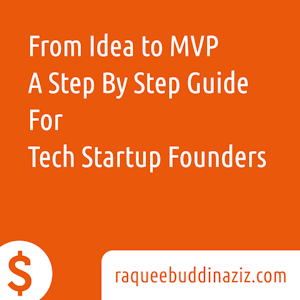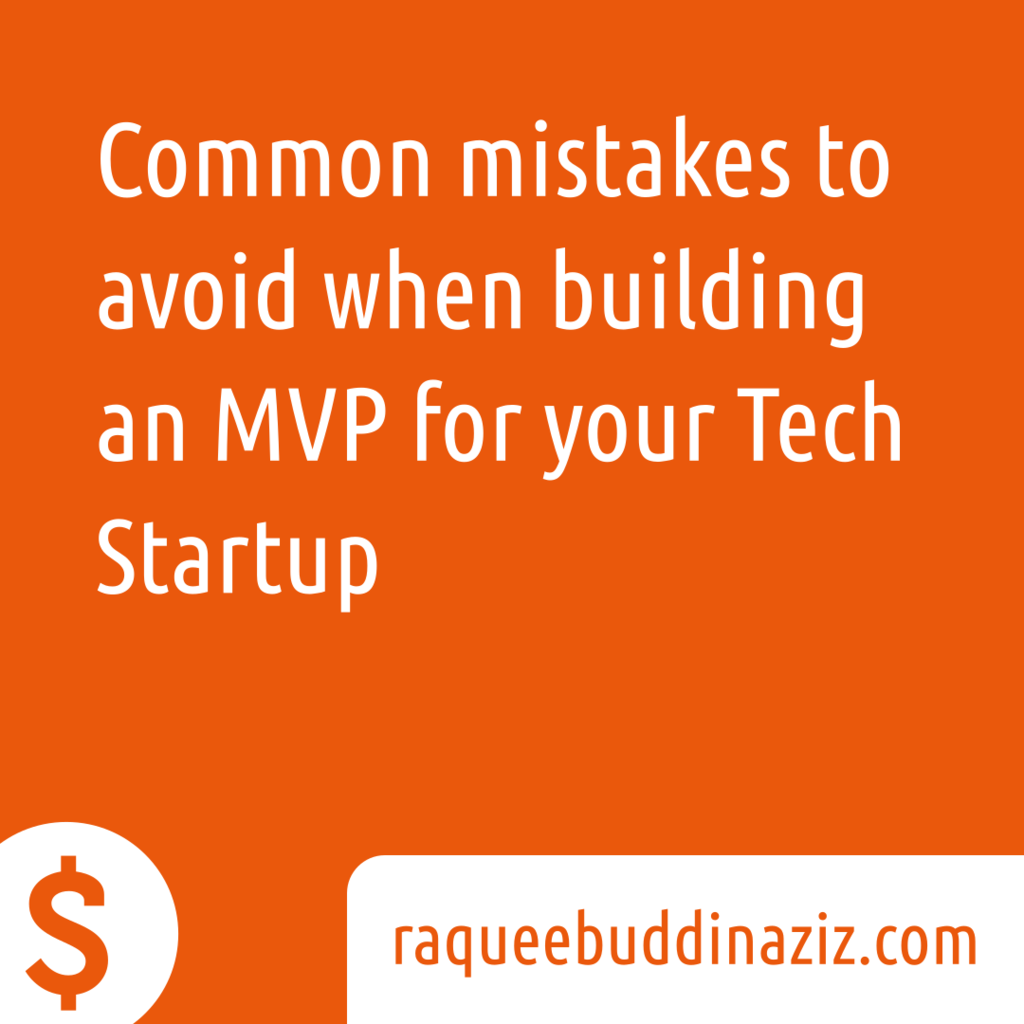By
Raqueebuddin Aziz
January 31, 2024
Freelance Web Designer & Developer

By
January 31, 2024
Freelance Web Designer & Developer
I highly recommend reading Why your tech startup needs an MVP before diving into this article.
Before you start planning and building an MVP you need to have done prior market research, which includes but not limited to:
Assuming you have talked to your target market, figured out what solution you want to implement to solve their problem, and have some people from that market eager to be early testers for your MVP, you are ready to move on to the MVP stage.
These are the things you need to do before you start developing/coding the MVP.
Clearly define the core feature of the app that will solve your target markets problem, your prior market research should help you on this step.
Make sure to be clear and leave no ambiguity, for e.g. if your startup is focused on solving commute costs for deliveries for small businesses, then a clear core feature might be smart navigation algorithm based on number of drivers, capacity of vehicles, and location of stores.
A badly defined core feature for the same startup would be feature to help decrease commute costs for deliveries for small businesses, as it is not clear and specific enough to take any action.
Once you have clearly defined a core feature, now you need to set the criteria that you will use to evaluate success of the MVP. Some example goals would be:
Similar to the core feature this should be something clear and specific, so you can evaluate the results without letting subjectivity and ambiguity play into it.
The easiest way to make the goal clear is to have a number associated with it like $10K or 10% in the above examples.
Lastly you need to set a budget, so you do not end up spending fortune on the MVP and have nothing left over when it comes time to build the real thing.
This budget would also dictate if you need funding before you start building the MVP or not.
If you or one of your co-founders know how to code, I would highly recommend you work on the MVP yourself instead of hiring someone. This would help you save resources, and you can use those resources later once you have validated your startup idea using the MVP and customer feedback.
Now comes the actual development and coding stage.
As the goal of the MVP is to get something out there as fast as possible, do not force the dev or the team to use technologies they are not familiar with, for reasons that don’t matter at the MVP stage like infinite scalability or performance.
It will only slow down your MVP stage and would hurt your feedback cycle and in turn your growth speed.
It is an excellent idea to stick to the budget you set in the pre-development stage. If you do end up using all of your budget, then it is time to use the success criteria defined in the pre-development stage to determine if the budget should be increased or this startup idea is just not profitable.
Try not focus your energy in things other than the core features define in the pre-development stage.
You will have plenty of time to work on beautiful designs, great performance and additional features once you are out of the MVP stage with valuable user feedback gathered.
Move fast, do not try to have thousands of tests, the most resilient databases, pristine bug free code, etc…
At this point the app is expected to have bugs and quirks, early testers expect these.
Do not forget to incorporate user feedback, it is the whole reason MVPs are a thing.
Tell your early testers / users to be as blunt in their feedback, make them feel that their feedback will directly impact the direction of the app and help solve their problems better.
If you make your early users feel like they can influence the direction of the app, that their feedback actually matters and is incorporated into the app, then you will form a loyal community of customers.
Once more build as fast as possible, gather user feedback, evaluate feedback and reiterate.
After you have followed the above steps and spent all your allocated budget, it is time to evaluate the results of the MVP.
Use the goals you set in the pre-development stage to evaluate
This is not an exhaustive list of next steps, but it can give you a good idea of what possible results of the evaluation can be.
If you decide to move on with the startup idea, the last thing to do is use all the feedback/knowledge gathered using the MVP phase to rewrite the app to be production ready.
It is highly recommended you do a complete rewrite, you will build the app a lot better the second time using the knowledge gathered. It is fine to use code snippets from the MVP codebase.
There it is start to finish, how to go from idea to MVP for your tech startup.
I highly recommend reading Common Mistakes to Avoid When Building an MVP for Your Tech Startup, before you dive into the development stage of building an MVP.
Leave a comment down below if you have any questions or tips for new tech startup founders

We use cookies to enhance your browsing experience and analyze website traffic. By continuing to use our website, you consent to the use of cookies in accordance with our Privacy Policy.